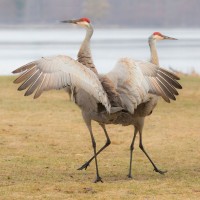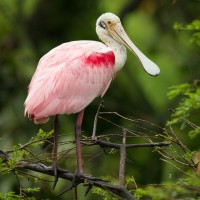- Overview
- Full Itinerary
- Photo Gallery
- Costing
- Travel Details
- Trip Reports
- Guide
- Map
- Know Before You Go
- Other Trips You May Like
May is a grand time to explore the Olympic Peninsula! Birds are active, flowers burst into bloom, and seabirds are beginning to nest. Our guides share their in-depth knowledge as they lead you through mountains, ocean, forests, meadows, glaciers, and coastal habitats within Washington’s Olympic National Park. Visit lands of the adjacent Makah Nation, two national wildlife refuges, and more.
Three distinct environments provide fabulous Pacific Northwest birding: 1) the only temperate rainforest in the contiguous 48 states; 2) one of the wildest coastlines in the world; and 3) the glacially-carved alpine splendor of the high Olympic Mountains. Dungeness National Wildlife Refuge, with its sand spit into the Straits of Juan de Fuca, and Dungeness River Audubon Center provide excellent opportunities for more birds. Having three nights at two lodges on the route helps keep logistics simple. Kalaloch Lodge with its ocean views invites you to immerse in nature, three nights in Sequim give you quick access to national park birding hot spots, and our final night on Bainbridge Island lets you explore a picturesque, artsy harbor town.
The park protects the Olympic Mountains, including Mt. Olympus. It provides habitat to 56 species of mammals, 130+ species of birds (including Spotted Owl and Marbled Murrelet), and numerous salamanders and other amphibians. The peninsula’s varied terrain is fantastic for birding and photography, as well as wildflower and wildlife viewing. Mammals include Roosevelt Elk, Sea Otter, endemic Olympic Marmot, and Mountain Goat. Learn about the prolific mosses, ferns, both alpine and forest wildflowers, spruces, firs and hemlocks, and cedars. You can be there at the perfect time this spring!
Tour Highlights
- Visit Nisqually National Wildlife Refuge to see over 40 bird species, including Rufous and Anna’s Hummingbirds, Pacific Slope Flycatcher, Bewick’s Wren, and Common Yellowthroat
- Stay at the historic Kalaloch Lodge, nestled in a lush, temperate rainforest on the Pacific coast
- Hike through Sitka Spruce Forest to a scenic Pacific beach, with views of stunning sea stacks
- Discover the western side of Olympic National Park, one of the world’s lushest forests
- Drive high into the Olympic Mountains to see wind-sculpted pygmy trees and myriad wildflowers
- Explore Neah Bay and Cape Flattery, the westernmost point of the continental USA
- Enjoy local foods and fun in the Pacific Northwest
Trip Itinerary
Itineraries are guidelines; variations in itinerary may occur to account for weather, road conditions, closures, etc. and to maximize your experience.
Mon., May 11 Arrivals in Seattle | Sequim
We pick up at the Radisson Hotel Seattle Airport (within sight of the airport) and other nearby hotels off of International Drive this morning. We suggest you come in the night before to rest up and be ready for our adventures.
We head out en route to Sequim, one of the prettiest spots on the Olympic Peninsula. First, we make a birding visit to the renowned Nisqually National Wildlife Refuge, an Important Bird Area. Enjoy a picnic lunch with the birds. This is a prime time of year to visit, and we hope to find five species of Washington’s swallows, American Bittern, Great Blue Heron, and Great Egret; Bald Eagle, Osprey, Peregrine Falcon, Northern Harrier, and Red-tailed Hawk; Rufous and Anna’s Hummingbirds; Willow and Pacific Slope Flycatchers; Pacific, Bewick’s, and Marsh Wrens; Yellow Warbler, Common Yellowthroat, and Wilson’s Warbler; Savannah, White-crowned, and Song Sparrows; Band-tailed Pigeon; and more. We should find over 40 species, while enjoying a leisurely walk on boardwalks and trails.
Nisqually NWR was established in 1974 for the protection of migratory birds and encompasses three thousand acres of salt and freshwater marshes, grasslands, riparian, and mixed forest habitats that provide resting and nesting areas for a wide variety of migratory waterfowl, songbirds, raptors, and wading birds. Recently, this outstanding refuge got even better with the construction of a one-mile boardwalk that leads through salt marsh wetlands to the shores of Puget Sound.
From Nisqually we travel to the Olympic Peninsula where we spend three nights in the town of Sequim. “Sunny Sequim” is ideally located close to numerous birding hot spots, including Olympic National Park. It’s also a great place to find excellent local dining. Our route takes us across the famous Tacoma Narrows Bridge. “Galloping Gertie” has long been replaced by two beautiful, and sturdy, suspension bridges.
Settle into your accommodations, then head up to the rooftop viewing area to sample the view! We gather for a welcome dinner and a chance to get to know your guides and travel companions.
Accommodations at the Holiday Inn Express, Sequim (L,D)
Tues., May 12 Sequim
Early morning we head out to drive the scenic road up to Hurricane Ridge located at 5,242 feet in Olympic National Park. A winding road takes us through changing vegetation as we climb in elevation; we eventually top out in the alpine for a fabulous view of snow-capped mountains. Along the route, we find the mountain passerines and raptors of the Olympic Peninsula. There are several easy walking paths that offer amazing views of the glaciers and mountains of Olympic National Park, the waterways that surround the peninsula, and Vancouver Island in British Columbia. We may even encounter snow!
While still in the forests, we stop at the park’s main visitor center. Waterfalls and cascades occur alongside the road, and scenic stops abound. The panorama of glacially carved peaks is so abundant here and provides us with amazing scenery and a living geologic classroom. Learn more about the adaptations of plants and animals to high elevation and alpine climates as we search for one of the Olympic Peninsula’s endemic species, the Olympic Marmot.
In the open tundra we may find courting American Pipit and Horned Lark. Among the stunted and wind-sculptured groves of pygmy trees in the Krumholtz zone, we may find Sooty Grouse, Golden-crowned Kinglet, Dark-eyed Junco, and White-crowned Sparrow, or perhaps a McGillivray’s Warbler singing to define its territory. We should also find myriad wildflowers!
Enjoy a picnic lunch and a walk to Hurricane Hill atop Hurricane Ridge for fine views of Olympic peaks and glaciers. In the afternoon, we descend from the mountains to a picturesque overview of the former, and recently removed, dam along the Elwha River. This was the largest dam-removal project in U.S. history and has already yielded a significant increase in the native salmon populations.
Hurricane Ridge has an impressive bird list, including Horned Lark, Canada Jay, Townsend’s Solitaire, Olive-sided Flycatcher, Chestnut-backed Chickadee, Sooty Grouse, and Anna’s Hummingbird. We also have opportunities to view Black-tailed Deer, Olympic Marmots, Black Bear, and Chipmunks. In the afternoon, we head down the hill and spend time in Port Angeles at locations along Ediz Hook waterfront and the Port Angeles Marina.
Dinner tonight is at a favorite local restaurant.
Accommodations at the Holiday Inn Express, Sequim (B,L,D)
Wed., May 13 Sequim | Birding Hotspots of the Dungeness Area
Enjoy a full day of birding as we sample the Sequim area hot spots: Dungeness Landing, 3-Crabs, Railroad Bridge Park, Dungeness National Wildlife Refuge, Cline Spit, and the Dungeness Fish Hatchery. We expect to see over 50 different bird species, just on this day. Here you can photograph, as well as view, birds like colorful California Quail, Anna’s and Rufous Hummingbirds, Steller’s Jay, and a variety of songbirds often posing at feeders.
Trails of Railroad Bridge Park, where an outstanding nature center is located, give us a chance to look for Swainson’s Thrush, Pacific-slope and Willow Flycatchers, Western Tanager, Evening Grosbeak, Orange-crowned and Wilson’s Warblers, Red-breasted Nuthatch, and four species of vireos: Hutton’s, Warbling, Cassin’s, and Red-eyed Vireos. The sheltered waters and mudflats, along with the spit itself, provide great habitat for waterfowl and shorebirds. Among other birds, we could see Brant, Pacific, and Common Loons, Western Grebe, Rhinoceros Auklet, Pigeon Guillemot, Common Murre, Western and Glaucous-winged Gulls, and a few shorebirds. We walk a short distance onto the spit and then back again, getting a good idea of which species are around, while enjoying the great views from this natural wonder.
Driving back to our lodgings at Sequim, we see a bit of the history of the Dungeness area—old schoolhouses and picturesque barns dot the landscape. If time permits, we may go over to see Rhinoceros Auklet and other seabirds at a stop at the rock jetty of John Wayne Marina. Sequim has become a popular spot for growing lavender and has some wonderful restaurants—we sample another tonight.
Accommodations at the Holiday Inn Express, Sequim (B,L,D)
Thurs., May 14 Kalaloch | Makah Tribal Lands & Cape Flattery
This morning we venture out along the very scenic Highway 112 to Cape Flattery, which is the farthest northwest point in the lower 48 and is located on the Makah Tribe reservation. It is impressive for its remoteness, scenic beauty, and insight into native cultures. The route is winding and passes through a mix of pristine forest areas and vast clear-cut areas, bringing the logging history of the peninsula quickly into perspective. Part of it parallels the coast, where Bald Eagle are a common sighting. Near Neah Bay we find many Red Cedar in the forests. This tree was vitally important to the culture and remains so today.
In the village of Neah Bay, we enjoy the impressive Makah Museum and explore the bay shore, looking for Purple Sandpiper on the rock jetty. We then take a hike on a tribal trail to Cape Flattery, where from a viewing area we look off to a seabird nesting island. Watch for Tufted Puffin, Sooty Shearwater, Brown Pelican, Peregrine Falcon, Osprey, Black Oystercatcher, both Western and Glaucous-winged Gulls, and Caspian Tern. Mammals that we watch from this scenic perch include Sea Otter and Harbor Seal. Neah Bay is one of the most important hotspot areas in Washington State and is famous for rarities because it sits at the mouth of the Strait of Juan de Fuca, which is just around the corner from the open sea.
From Neah Bay it is a two-hour drive down the coast to Kalaloch Lodge in Olympic National Park, where we spend three nights. The ocean view is dramatic! Settle into your accommodations and enjoy dinner at the lodge in their lovely dining room looking out to the ocean. Evenings we typically tally up the day’s species list.
Accommodations in cabins at Kalaloch Lodge, Olympic National Park (B,L,D)
Fri., May 15 Kalaloch | Coastal Coves & Temperate Rainforest
Kalaloch Lodge sits on the edge of the sea bluff and overlooks the Pacific Ocean. Here the freshwater Kalaloch Creek finds the salt water. This opportunity for fresh water is a bird paradise where numerous species of birds come to bathe and wash off the salt water. Whales and seals are often seen from shore. From Kalaloch it is a short drive to the Hoh Rainforest of Olympic National Park, which is part of the largest temperate rainforest in the world.
Today we explore a loop trail in perhaps the park’s most famous site, which showcases the finest temperate rain forest in Olympic National Park. Experience the splendor of the cathedral-like Hoh Rainforest while searching for ancient forest birds and wildlife. Massive Sitka Spruce and Western Hemlock dominate the rainforest, with giant Western Red Cedar, Douglas Fir, Red Alder, and Vine Maple growing alongside in smaller numbers.
The west side of Olympic National Park is one of the world’s wettest places, and myriad plant species thrive here. We examine mosses, ferns, liverworts, fungi, and wildflowers galore. Big-leaf Maple is perhaps the most memorable tree species here, with oddly sculptured trunks and branches. These trees also exhibit a strange adaptation: they send rootlets into their burden of lush mosses and epiphytes. Starting with Banana Slug, we observe the intricate web of ecological relationships. Above us stand mighty trees, giants of another era, and nest sites for rare Marbled Murrelet and Northern Spotted Owl. Under the intricate canopy of these lush forests, we look for feeding flocks of Townsend’s Solitaire, Chestnut-backed Chickadee, Townsend’s Warbler, and Olive-sided Flycatcher. On large Black Cottonwoods along rushing streams, we may find Orange-crowned Warbler, Pacific-slope Flycatcher, Western Tanager, or chattering above us, Vaux’s Swift. With luck, we may encounter the forest-dwelling Roosevelt Elk. After walking among the forest giants, some of which are over 500 years old, and a picnic lunch, we continue on our way.
There is no other place in the world with the intense plant biodiversity as the rainforests on the Olympic Peninsula. In the afternoon, we visit Lake Quinault and the historic Lake Quinault Lodge of the Olympic National Forest and Quinault Tribe, enjoying an early dinner in their historic dining room.
Accommodations at Kalaloch Lodge (B,L,D)
Sat., May 16 Kalaloch | Coastal Walks & Birding
A short drive north of Kalaloch is the small, but famous town of Forks, Washington. Forks became famous with the release of the Twilight books and movies. In addition to vampires and werewolves, Forks and the Quileute Tribe have a long and interesting history on the Olympic Peninsula. Forks has a Timber Museum and a great birding trail.
Adjacent to Forks, the Quileute Tribe has a great location at 1st Beach with stunning views of Sea Stacks (rock pillars rising from the ocean floor), and of course birds and wildlife. Locations include La Push, Rialto Beach, Mora, and the Quileute Harbor. There are a number of short hikes we can take to sample varied habitat and viewpoints.
Today is a fine day to focus in on plant life as well as the birds, and we enjoy another good dinner in the cozy dining room of our lodge.
Accommodations at Kalaloch Lodge, Olympic National Park (B,L,D)
Sun., May 17 Bainbridge
After breakfast, we head back north across the Olympic Peninsula and travel along the extraordinarily beautiful, glacially-carved Crescent Lake, located within Olympic National Park, with a stop at Lake Crescent Lodge on the Barnes Peninsula to view American Dipper, Western Tanager, Hammond’s Flycatcher, and Red-breasted Nuthatch. President Franklin Roosevelt signed the final paperwork that created Olympic National Park in 1938. Shortly after, he visited the Olympic Peninsula and stayed at Lake Crescent Lodge. There is a lot of great history on this small bit of land that jets out into Lake Crescent. The lake is also a geological wonder at 624 feet deep, with the bottom of the lake being below sea level.
From Lake Crescent we continue across the Olympic Peninsula to the Kitsap Peninsula, and then onto Bainbridge Island where we spend our final night. Getting an early start, we visit the historic town of Port Townsend along the way. In early May its prime time for seeing rhododendrons in bloom. Fort Worden State Park, best known as the set for the film, An Officer and a Gentleman, is also an outstanding area for seabirds due to the tidal mixing of currents near the Port Wilson Light House. Common Murre, Ancient and Marbled Murrelets, Pacific, Red-throated, and Common Loons, and Harlequin Duck are all possible here. A Great Horned Owl is often at home in some of the large trees around the buildings. After walking around the scenic lighthouse area with sweeping views of the Straits of Juan de Fuca, Whidbey Island, and both Cascade and Olympic Mountain peaks, we head just a few miles to Kah Tai Wetlands to look for a large variety of wintering waterfowl and sparrows. Here we are likely to see both kinds of scaup, Bufflehead, Ruddy Duck, Common and Hooded Mergansers, American and possibly Eurasian Wigeons, Green-winged Teal, and Northern Pintail.
Our route takes us across the Hood Canal Bridge, which is the longest floating bridge in the world that crosses over salt water. We arrive in time for you to see a bit of the island and settle into our lodgings to freshen up before our final dinner at a great local restaurant.
Accommodations at Marshall Suites, Bainbridge Island (B,L,D)
Mon., May 18 Bainbridge Island | Return to Seattle
This morning, we take the Bainbridge ferry across Puget Sound, which offers great views of both the Seattle skyline and the Olympic Mountains—a grand finale to our exploring. Puget Sound is home to a variety of gulls, including Glaucous-winged and small pelagic birds such as Pigeon Guillemot and Rhinoceros Auklet. And there is always a chance to see the resident Orca pods of Washington State.
We time our ferry for mid-morning with plans to be at the airport by 11:30 AM. Please plan on flights out after 1:30 PM. We can also drop you off at the Radisson Hotel Seattle Airport or the airport hotel of your choice if you wish to stay on in Seattle or to take a next day early morning flight. There is a handy light rail public transportation station that makes getting to downtown quite easy. (B)
Cost of the Journey
Cost of the tour is $4090 DBL / $5070 SGL, per person based on double occupancy from Seattle. The cost includes seven nights’ accommodation, all meals as noted in the itinerary with a focus on local dining and ferry transportation during the journey, professional guide services, park and other entrance fees, and miscellaneous program expenses.
Not included in the tour cost is round-trip airfare to and from Seattle, personal expenses such as laundry, telephone, drinks from the bar, and gratuities for luggage handling or other services. Guide gratuities are encouraged, but given at the tour’s end at your discretion. For pre-or-post night accommodations, we recommend the Radisson Seattle Airport hotel. They have a complimentary shuttle from the airport, and there is a public light-rail LINK station close by that gives you access to the city if you wish to explore.
Travel Details
Please plan to make air travel plans only after the minimum group size has been met. We will send you a confirmation email as soon as the trip has been confirmed.
Arrival and Departure Airport: Seattle-Tacoma International Airport (SEA)
Arrival Details: Plan flights to arrive on May 11, 2026, no later than 10:30 AM.
Departure Details: Plan flight departures on May 18, 2026, after 1:30 PM.
Travel Tips: As flights can be delayed, we recommend you arrive a day early and rest up from your travels. There are many hotels near the airport in Seattle and we have a couple of recommendations below. If you want to explore Seattle prior to heading to the Olympic Peninsula, there are plenty of things to do! The Chihuly Garden & Glass is a museum with glass exhibits artistically crafted by Dale Chihuly. There are many fascinating and colorful blown glass sculptures both indoors as well as outside in the garden. The iconic Space Needle is right next door and offers amazing panoramic views of Seattle, Mount Rainier, and Puget Sound. Are shopping and eating local food more your style? Then don’t miss the famous Pike Place Market, one of the oldest continuously operating farmers markets in the United States. You can find just about anything here from fresh fish and produce to crafts and collectibles. There are also many restaurants here and if you’re into seafood, don’t miss the clam chowder! Transportation to downtown is easy with the public light rail system, taxis, and Uber.
Hotel Recommendations: Radisson Hotel Seattle Airport (206) 244-6666 Holiday Inn Express & Suites Seattle Airport (206) 824-3200
Browse below for trip reports and species lists from past versions of this and other tours from this destination.
Washington
- February 2013
- July 2013
- June 2017
- June 2018
- June 2019
- February 2021
- May 2021
- February 2022
- August 2022
- May 2023
- May 2024
- September 2024
-
Stephen Grace

Stephen is an award-winning author, natural history educator and conservationist. He has also contributed to documentary films, and his nature photography has been widely published. Over the past two decades, he has introduced groups of travelers to nature and culture in destinations as varied as Uganda, New Zealand and Alaska.
After moving from Colorado to the Oregon coast, Stephen was captivated by the sight of a Tufted Puffin carrying fish back to its burrow, and the first time he heard a Swainson’s Thrush sing, he knew his life would never be the same. He has been studying birds and sharing their beauty with people ever since.
Formative experiences during Stephen’s journey as a naturalist have included tagging along as a teenager with his grandparents in Madera Canyon, where he absorbed their love of Arizona’s sky islands; helping people with different ability levels experience the Yellowstone ecosystem when he lived in Jackson Hole, Wyoming; and sailing aboard a historic schooner to share the wonders of the Salish Sea with students.
Now based in Port Townsend, Washington, Stephen explores the Pacific Northwest by backpacking, paddleboarding, snorkeling, biking, trail running, and skiing. His wide-ranging natural history pursuits include coring trees to count their growth rings, identifying bats by analyzing their biosonar signals, hunting mammoth tusks in Pleistocene bluffs, searching for the elusive Rubber Boa, preserving native prairie, raising awareness about plankton, and leading sea slug safaris.Other trips with Stephen Grace
-
 Birding Canyon Country FULL - See our September departure!May 18 - 26, 2025
Birding Canyon Country FULL - See our September departure!May 18 - 26, 2025 -
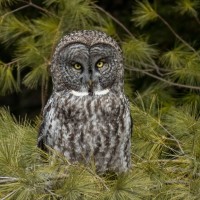 Western Canada FULL - See our Vancouver Island tour!June 16 - 26, 2025
Western Canada FULL - See our Vancouver Island tour!June 16 - 26, 2025 -
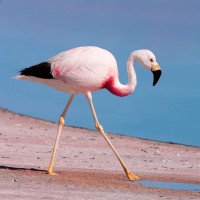 Peru's Avian & Archaeological WondersJuly 11 - 21, 2025, w/Machu Picchu extension
Peru's Avian & Archaeological WondersJuly 11 - 21, 2025, w/Machu Picchu extension -
 Olympic Peninsula Fall Explorer FULL - Check out Vancouver Island: Coastal Birds, Bears & Whales!September 4 - 11, 2025
Olympic Peninsula Fall Explorer FULL - Check out Vancouver Island: Coastal Birds, Bears & Whales!September 4 - 11, 2025 -
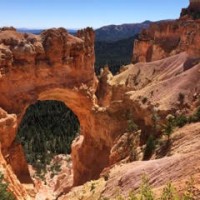 Birding Canyon CountrySeptember 16 - 24, 2025
Birding Canyon CountrySeptember 16 - 24, 2025 -
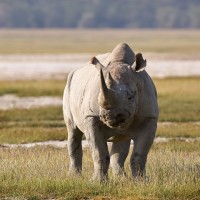 Northern Tanzania: Wildlife & Birding Safari FULL - Check out Southern Tanzania!October 12 - 23, 2025, w/Amboseli & Nairobi National Parks extension
Northern Tanzania: Wildlife & Birding Safari FULL - Check out Southern Tanzania!October 12 - 23, 2025, w/Amboseli & Nairobi National Parks extension -
 Thanksgiving in Trinidad & TobagoNovember 22 - December 1, 2025
Thanksgiving in Trinidad & TobagoNovember 22 - December 1, 2025 -
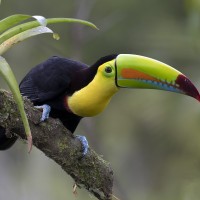 Christmas in Costa Rica December 22 - 29, 2025
Christmas in Costa Rica December 22 - 29, 2025 -
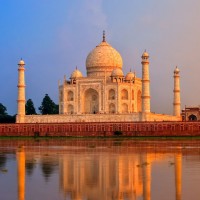 India: Birds, Tigers & the Taj MahalJanuary 27 - February 10, 2026
India: Birds, Tigers & the Taj MahalJanuary 27 - February 10, 2026 -
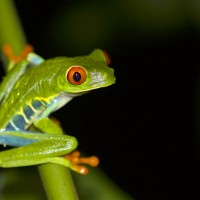 Costa Rica: Birding Across the Continental Divide Arenal Observatory & More!February 16 - 25, 2026
Costa Rica: Birding Across the Continental Divide Arenal Observatory & More!February 16 - 25, 2026 -
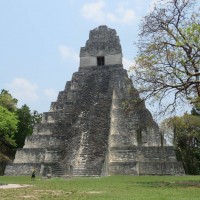 Best of Guatemala: Birding & CultureMarch 10 - 20, 2026, w/Tikal extension
Best of Guatemala: Birding & CultureMarch 10 - 20, 2026, w/Tikal extension -
 Trinidad & Tobago: Incredible Birds & WildlifeApril 10 - 19, 2026
Trinidad & Tobago: Incredible Birds & WildlifeApril 10 - 19, 2026 -
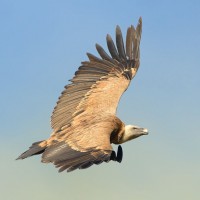 Spring in Spain: Birding & NatureApril 22 - May 5, 2026
Spring in Spain: Birding & NatureApril 22 - May 5, 2026 -
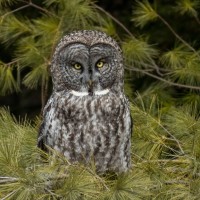 Western CanadaJune 18 - 28, 2026
Western CanadaJune 18 - 28, 2026
-
Essential Information +
Packing List +
Suggested Reading List +
Useful Links +
Photo credits: Banner: Scoping Tufted Puffins at Cape Flattery, courtesy Woody Wheeler; Common Murre, Peg Abbott; Rialto Beach by Woody Wheeler; Naturalist Journeys Group x2 by Woody Wheeler; Olympic Marmot by Carol Simon; Olympic Group, Naturalist Journeys Stock; Beach Rocks, Naturalist Journeys Stock; Tufted Puffin, Greg Smith; Cascade Mountains, Naturalist Journeys Stock; Steller's Jay by Peg Abbott; Whidbey Fort, Naturalist Journeys Stock; Rufous Hummingbird, Greg Smith; Sea Otter, Greg Smith; Black Turnstone, Greg Smith; Beach Rocks, NJ Stock; Townsend's Warbler, Steve Wolfe; Dungeness River Audubon Center, Woody Wheeler; Dungeness Spit NWR, Woody Wheeler; Green-winged Teal, Tom Dove; Violet-green Swallow, Steve Wolfe; Red-winged Blackbird, Greg Smith; Cape Flattery, Woody Wheeler; Chickadee, Naturalist Journeys Stock; Sea Otter, Greg Smith; Snowy Plover, Greg Smith; Black-tailed Deer, Woody Wheeler; Upper Dungeness, Woody Wheeler; Hiking, Naturalist Journeys Stock.

























